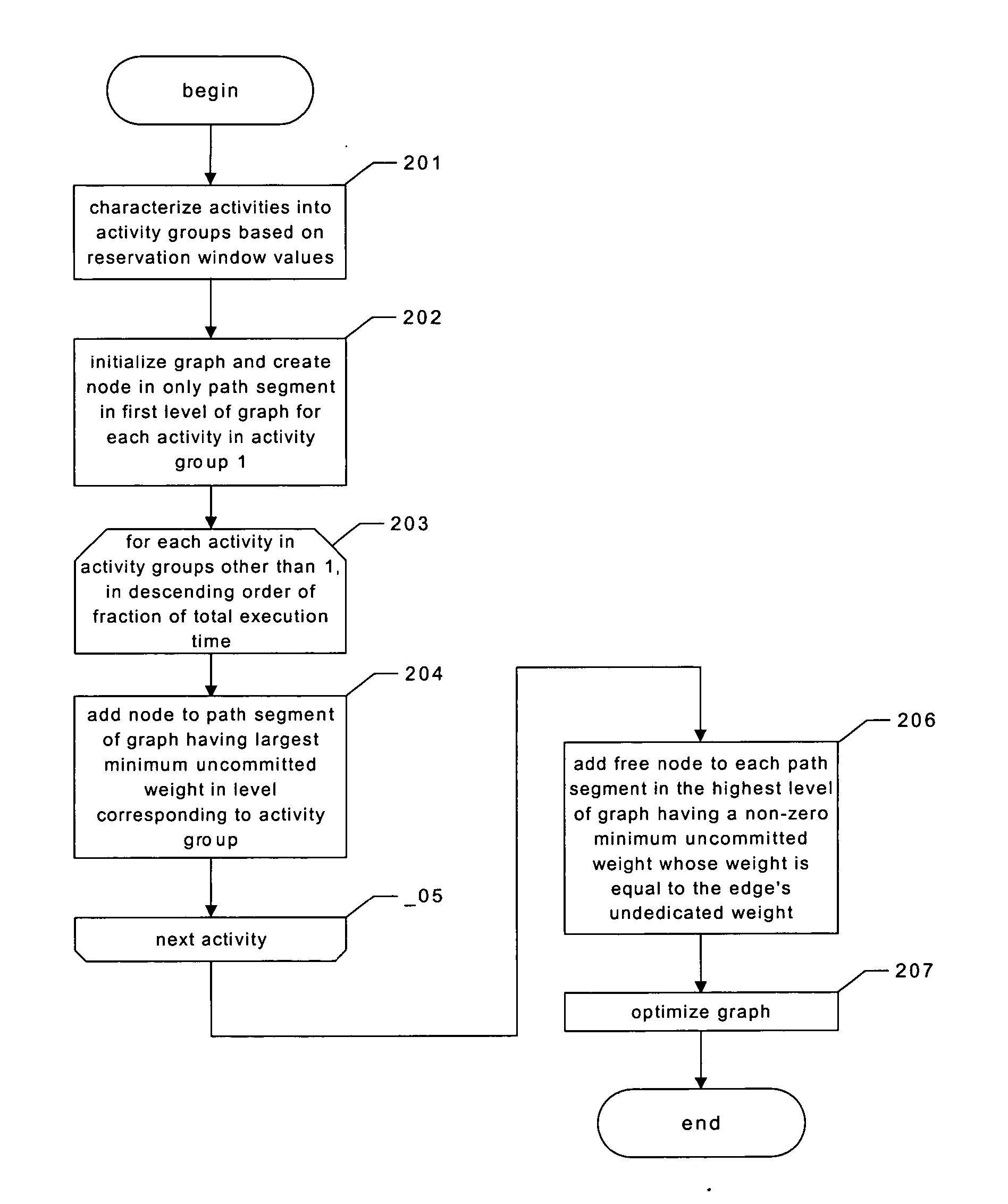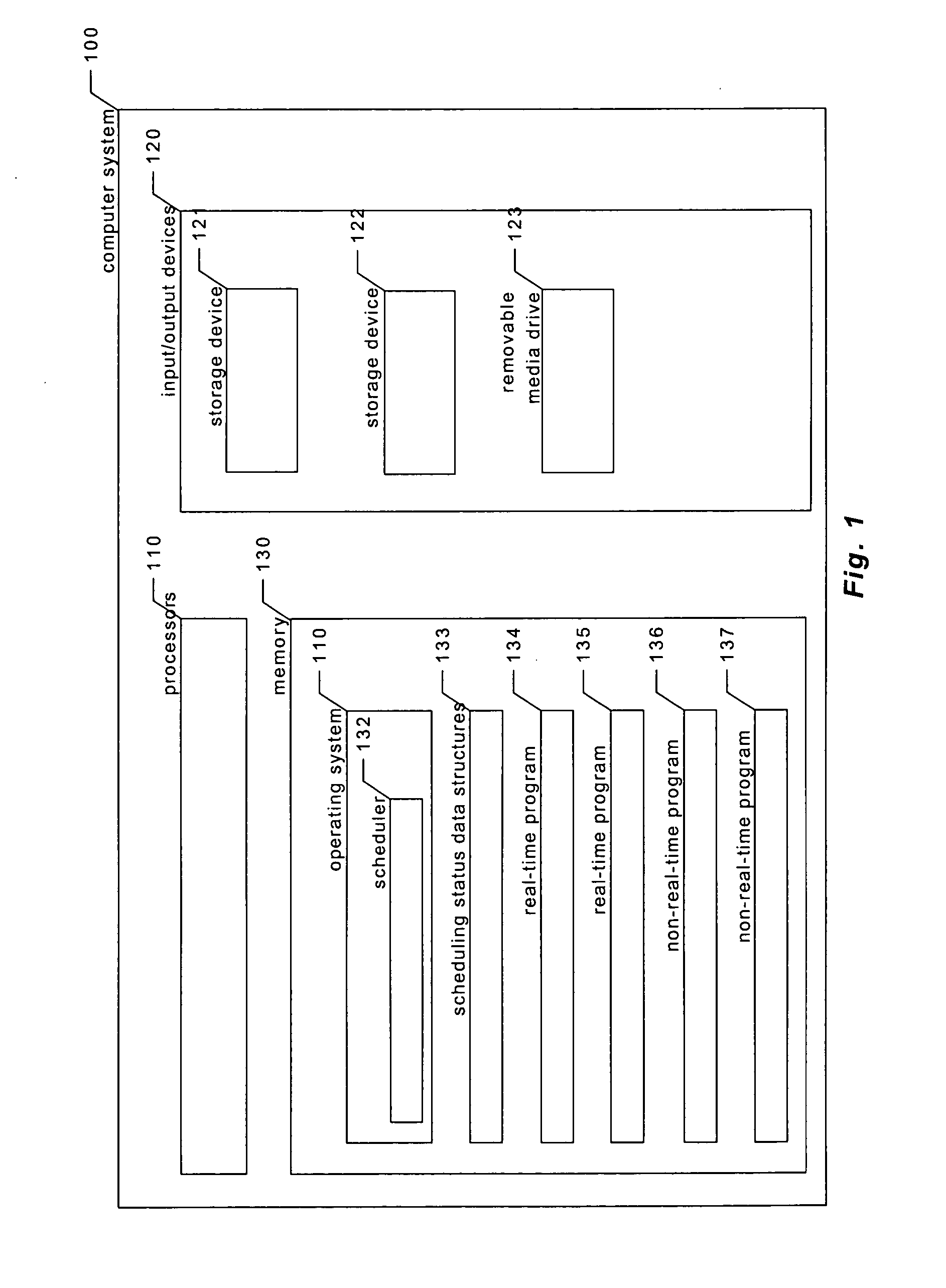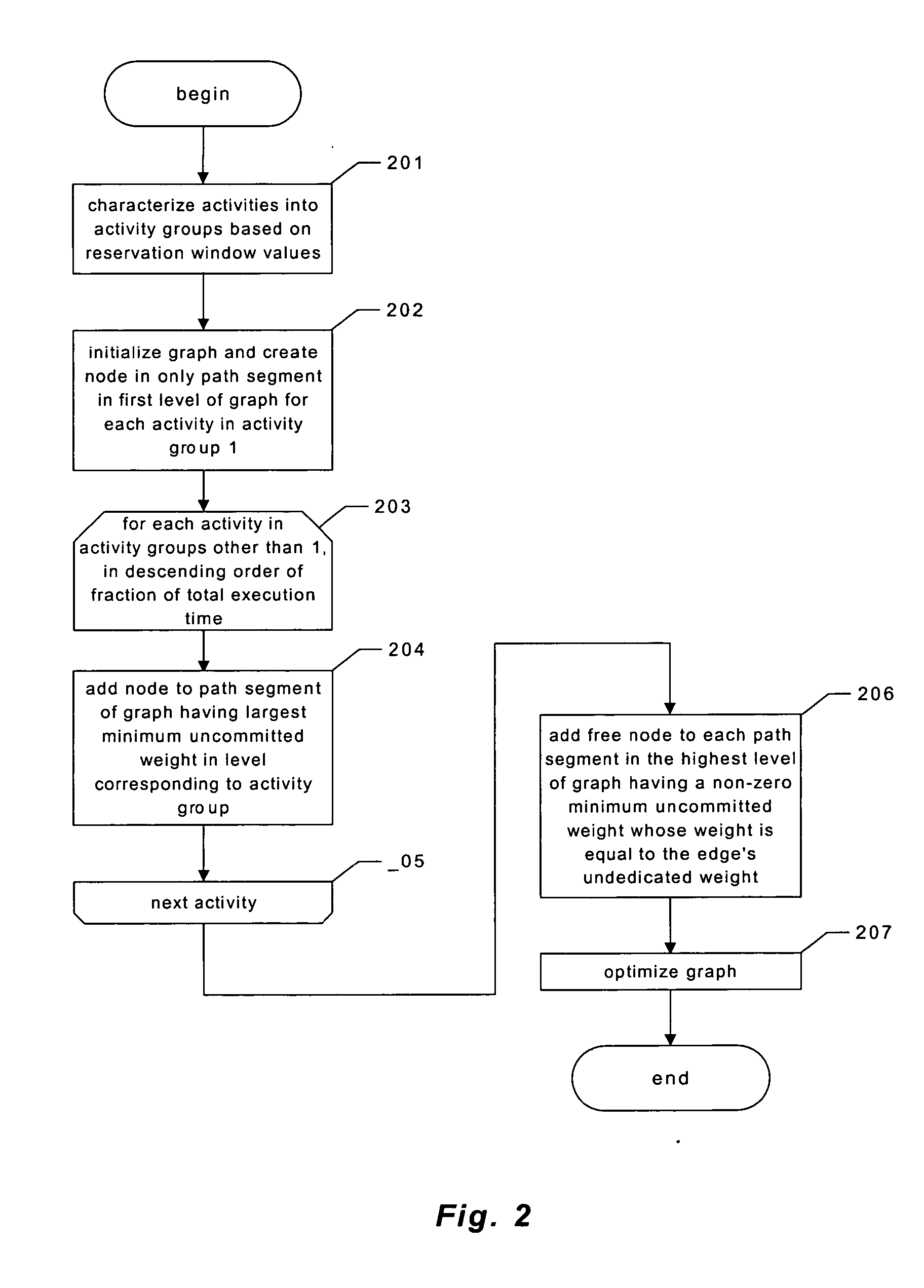Providing predictable scheduling of programs using repeating precomputed schedules on discretely scheduled and/or multiprocessor operating systems
a program and operating system technology, applied in the field of processor scheduling, can solve the problems of large processing time, large processing time, and large processing time consumption, and achieve the effects of reducing processing time, maximizing individual interval length, and efficient use of caches
- Summary
- Abstract
- Description
- Claims
- Application Information
AI Technical Summary
Benefits of technology
Problems solved by technology
Method used
Image
Examples
Embodiment Construction
The present invention provides predictable scheduling of real-time programs and non-real-time programs using a repeating precomputed schedule. In one embodiment, a thread scheduling software facility (“the scheduler”) utilizes a precomputed schedule that specifies the future execution of activities and threads having outstanding time constraints, which significantly reduces the processing required to identify the next thread to execute when the processor becomes available. As a result, the process of identifying the next thread to execute can be performed in a bounded amount of time that is independent of the number of threads and activities being scheduled. The precomputed schedule allows the scheduler to assess the feasibility of reservations and time constraints when they are submitted, and immediately refuse any nonfeasible reservations and time constraints. The precomputed schedule also allows the scheduler to guarantee that reservations will be honored with regularity. The pr...
PUM
 Login to View More
Login to View More Abstract
Description
Claims
Application Information
 Login to View More
Login to View More - R&D
- Intellectual Property
- Life Sciences
- Materials
- Tech Scout
- Unparalleled Data Quality
- Higher Quality Content
- 60% Fewer Hallucinations
Browse by: Latest US Patents, China's latest patents, Technical Efficacy Thesaurus, Application Domain, Technology Topic, Popular Technical Reports.
© 2025 PatSnap. All rights reserved.Legal|Privacy policy|Modern Slavery Act Transparency Statement|Sitemap|About US| Contact US: help@patsnap.com



